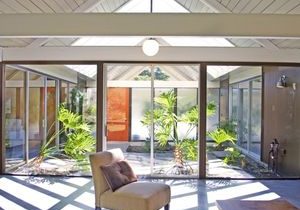You find a fabulous listing, in your price range, in the neighborhood you desire with features that you’re looking for.
While the online pictures looks great, in person you find the bushes are overgrown, the front hallway is covered with tacky wallpaper, the kitchen cabinets are dated, the living room rug smells musty, and the hardwood floors have black water marks on them.
Should you head back out the door? Maybe. To fully determine whether you should cross this home off of your list, you’ll need to gather more information, and perhaps look past the blemishes to get a full picture of this home’s potential.
The following seven steps can help you better determine if this home has potential and can ultimately be transformed into your dream home.
Start with emotion, but end with facts. Buying a home is an emotional process. You often find yourself trying to determine if this is where you want to spend the next 10, 20, or 30 years of your life (and perhaps raise a family). It’s OK if your initial impression is an emotional one. But because the purchase may be the largest you’ll ever make, it is essential that you gather all of the facts necessary to make an educated decision.
Look for good bones. Don’t get hooked on the decorating. First, you will need to learn to look past the furniture, wall colors, window treatments, and other decorating, and just look at the home layout and flow. Aesthetics are relatively inexpensive to fix – major construction is another matter.
Make sure the most expensive stuff works. The two most expensive rooms in a home to renovate are kitchens and bathrooms. If you’re stretching to be able to afford a home, make sure these two rooms are move-in ready and don’t need renovating anytime soon.
Take an inventory of what needs fixing. You may end up looking at several homes before placing a bid. That means it can get quite confusing to remember the details of each home. While house-hunting, be sure to take pictures and develop a list of things you like in each of the homes, and also make a list of things that might need fixing.
Is there room for expansion? You may not be concerned with adding onto the home you’re viewing today, but you may decide in the future to expand. Don’t necessarily exclude those that don’t have the room or a logical place to expand, but do understand that you will be limited in your options down the road.
What’s the condition of the home’s exterior? Does it need painting? Does it have painted brick that’s peeling? Is the aluminum siding chalking? How old is the roof? Improving the exterior can be costly. Check the exterior walls carefully before putting in a bid (*incidentally, most of the items mentioned in this blog are typically covered during a general inspection, conducted by a licensed inspector).
Landscaping: Landscaping not only includes the grass, bushes and any gardens, but also the hardscape – the sidewalk, deck and/or patio. Living in beautiful sunny California, we spend a lot of time outdoors. Landscaping improvements can be costly, but is one area in which homeowners often tackle projects themselves. If you have the time, energy, and expertise you can save money by doing some landscaping improvements. But costs can add up here – be sure to factor that into your decision and/or bid.






















